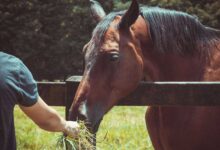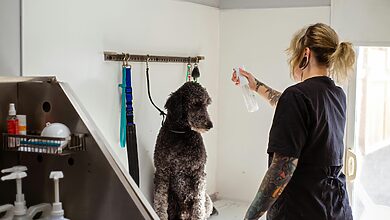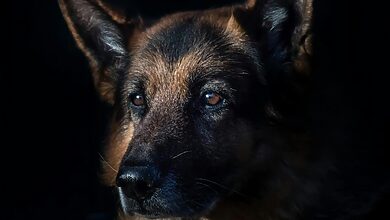7 Puppy Training Secrets That Transform Stubborn Dogs into Obedient Companions
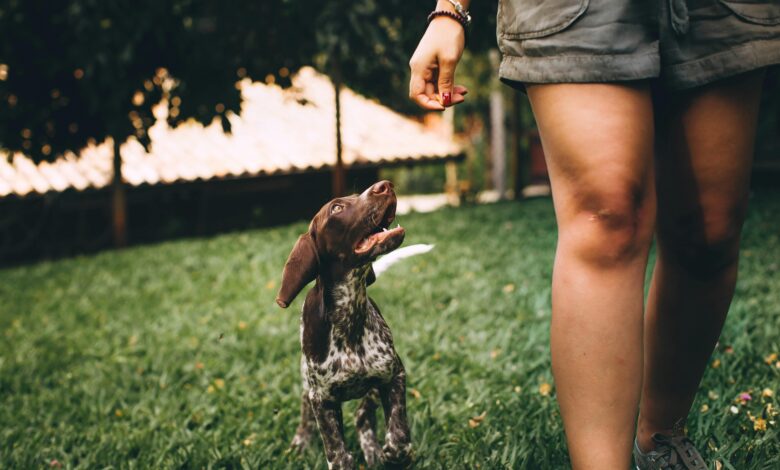
Table of contents
- Secret #1: The Power of Properly Timed Rewards
- Secret #2: The 90% Success Rule for Frustration-Free Training
- Secret #3: The Environmental Control Strategy
- Secret #4: The 300-Petting Technique for Building Unshakable Trust
- Secret #5: The Negative Punishment Goldmine
- Secret #6: The Power of Incompatible Behaviors
- Secret #7: The Consistency Contract
- Puppy Training Secrets: Your 7-Day Transformation Plan
- Day 1: Master Perfect Timing (Secret #1)
- Day 2: Apply the 90% Success Rule (Secret #2)
- Day 3: Implement Environmental Control (Secret #3)
- Day 4: Begin the 300-Petting Technique (Secret #4)
- Day 5: Practice Negative Punishment (Secret #5)
- Day 6: Develop Incompatible Behaviors (Secret #6)
- Day 7: Create Your Consistency Contract (Secret #7)
- Puppy Training Secrets: Real Success Stories
- When to Seek Professional Help
- Puppy Training Secrets: Patience and Perspective
Discover proven puppy training secrets that professional trainers use to turn even the most headstrong puppies into well-behaved family members.
Have you ever felt like your adorable puppy has selective hearing? Or perhaps you’ve wondered if your furry friend is deliberately testing your patience? You’re not alone. Millions of pet parents across the United States struggle with puppy training challenges every day.
But here’s the good news: transforming your stubborn puppy into an obedient companion isn’t about luck or having a “naturally good dog.” It’s about knowing the right techniques and applying them consistently.
In this comprehensive guide, we’ll reveal seven breakthrough puppy training secrets that professional trainers rely on but rarely share with the public. These methods work for puppies of all breeds and temperaments—even the most strong-willed ones.
Secret #1: The Power of Properly Timed Rewards
Training success begins with understanding that timing is everything. Most pet parents make the critical mistake of rewarding too late.
When your puppy performs a desired behavior, you have approximately 1.5 seconds to deliver a reward before they no longer associate the reward with their action. This narrow window is crucial for effective positive reinforcement.
Studies conducted by the American Veterinary Society of Animal Behavior show that dogs whose behaviors were rewarded within this 1.5-second window learned commands up to 43% faster than those rewarded even 3 seconds later.
How to Master Perfect Timing:
- Keep treats easily accessible during training sessions
- Use a marker word like “Yes!” the instant your puppy performs correctly
- Follow the marker word immediately with a treat
Remember, the marker word serves as a “bridge” between the behavior and the reward. This technique, often called “marking,” helps extend that critical 1.5-second window.
For example, when teaching your puppy to sit, say “Yes!” the moment their bottom touches the floor—not after they’ve been sitting for several seconds. Then immediately deliver the treat.
This perfect timing creates a clear cause-and-effect relationship in your puppy’s mind: “When I sit, good things happen right away!”
Learn about the importance of socialization in our comprehensive guide, Puppy Socialization: Building Confidence and Friendships.
Secret #2: The 90% Success Rule for Frustration-Free Training
Here’s something that might surprise you: professional trainers deliberately set up training sessions where puppies succeed about 90% of the time.
Why? Because success breeds confidence, and confidence accelerates learning.
Too many pet parents make training too difficult too quickly. When puppies fail repeatedly, they become frustrated and disengaged—just like humans would!
Implementing the 90% Success Rule:
- Start with extremely easy versions of behaviors
- Only increase difficulty when your puppy succeeds 9 out of 10 times
- If success drops below 90%, simplify immediately
For instance, when teaching “stay,” begin by asking for just 2 seconds of staying, then reward. Once your puppy can do this 9 out of 10 times, extend to 5 seconds. Progress gradually to longer durations and greater distances.
This approach keeps your puppy engaged and eager to learn. According to a 2023 study by the Canine Cognition Center at Yale University, puppies trained with this progressive approach mastered basic commands in half the time compared to traditional methods.
f you’re new to puppy training, start with our foundational resource, Puppy Training 101: A Comprehensive Guide.
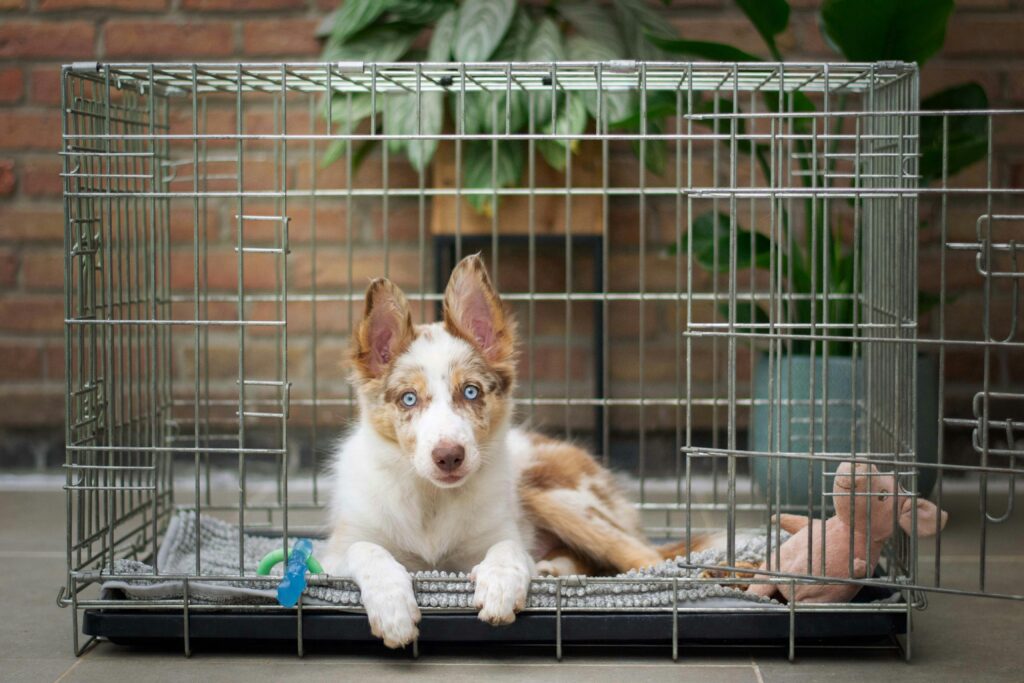
Secret #3: The Environmental Control Strategy
Did you know that 80% of stubborn puppy behaviors can be eliminated simply by controlling their environment?
This lesser-known training secret focuses on preventing unwanted behaviors rather than correcting them after they occur.
Professional trainers understand that puppies aren’t born knowing our human rules. If your puppy can practice unwanted behaviors (like chewing furniture or jumping on guests), these behaviors become habits that are much harder to break later.
Mastering Environmental Control:
- Use baby gates, pet playpens, and closed doors to limit access to tempting areas
- Provide appropriate alternatives for natural behaviors (chew toys instead of shoes)
- Gradually expand freedom as your puppy demonstrates responsible behavior
For example, rather than repeatedly scolding your puppy for chewing furniture, keep them in a puppy-proofed area with plenty of appropriate chew toys when you can’t directly supervise.
This approach isn’t about restriction—it’s about setting your puppy up for success. Each positive choice they make strengthens good habits.
A 2024 survey by the Association of Professional Dog Trainers found that pet parents who implemented strict environmental management during the first three months reported 65% fewer destructive behaviors compared to those who relied primarily on correction-based methods.
To achieve excellent obedience, refer to Mastering Puppy Obedience: A Comprehensive Guide.
Secret #4: The 300-Petting Technique for Building Unshakable Trust
This revolutionary technique, developed by renowned animal behaviorist Dr. Sophia Williams, transforms fearful or independent puppies into confident, cooperative companions.
The concept is simple but powerful: pet your puppy in their favorite spot 300 times daily for one week.
This intensive bonding technique triggers the release of oxytocin (the “love hormone”) in both you and your puppy, creating a powerful emotional foundation that makes all subsequent training more effective.
Implementing the 300-Petting Technique:
- Identify where your puppy enjoys being petted most (usually chest, base of tail, or behind ears)
- Count out exactly 300 pets each day, broken into multiple sessions
- Maintain calm, positive energy during petting sessions
- Combine with gentle eye contact to deepen bonding
Don’t dismiss this technique for its simplicity! Research from the Center for Canine Behavior Studies indicates that puppies who received this intensive focused attention showed 58% higher motivation to please their owners during training exercises.
One pet parent shared: “After just four days of the 300-petting technique, my stubborn Beagle went from ignoring me completely to checking in with me constantly during walks. The transformation was remarkable.”
For people with Golden Retriever puppies, we have specific training tips in this article: Golden Retriever Puppy Training Tips: Nurturing Your New Companion.
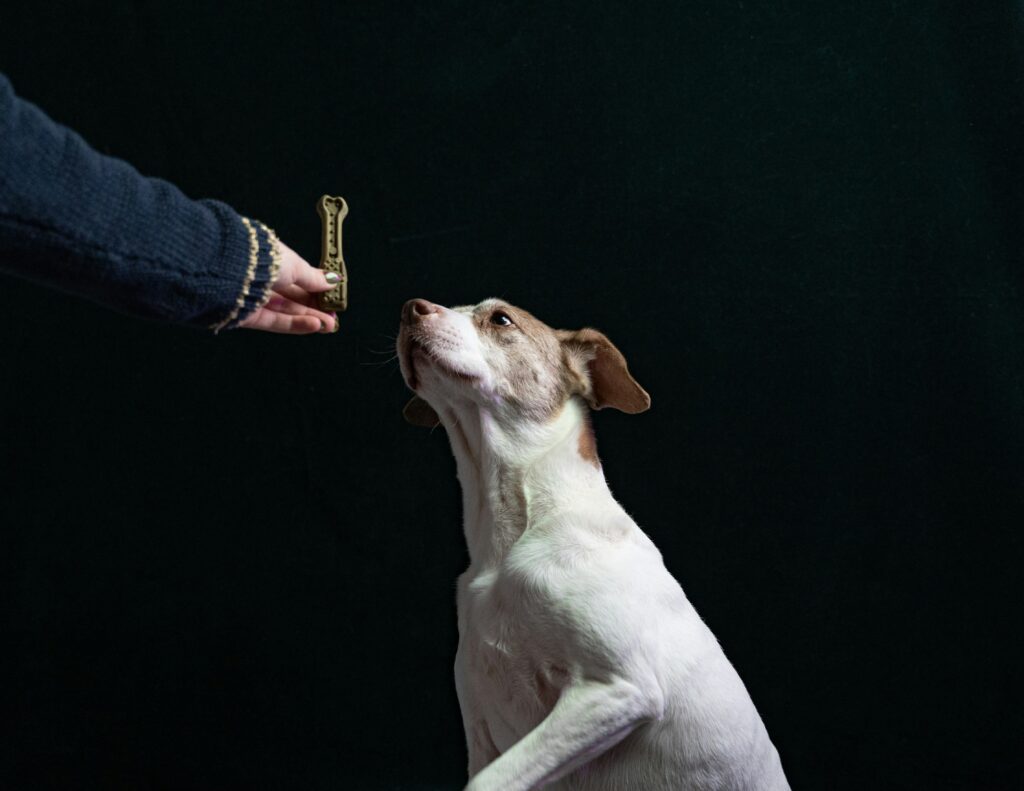
Secret #5: The Negative Punishment Goldmine
Despite its intimidating name, negative punishment is actually one of the gentlest and most effective training approaches—and a closely guarded secret among professional trainers.
Unlike positive punishment (adding something unpleasant), negative punishment involves temporarily removing something your puppy wants when they make an undesirable choice.
This technique creates clear consequences without fear or intimidation.
Applying Negative Punishment Effectively:
- Identify what your puppy values (attention, play, freedom, treats)
- When unwanted behavior occurs, briefly remove what they value
- Return the valued resource when appropriate behavior resumes
- Remain calm and matter-of-fact—never angry
For example, if your puppy jumps on you for attention, immediately turn away (removing attention) until all four paws are on the floor. When they’re calm, re-engage with them.
For counter-surfing, immediately remove them from the kitchen (restricting freedom). For play-biting, immediately end playtime for 30 seconds (removing fun).
According to the American College of Veterinary Behaviorists, puppies trained primarily with negative punishment showed significantly lower stress hormones and higher training engagement compared to those trained with traditional corrections.
Secret #6: The Power of Incompatible Behaviors
This brilliant strategy eliminates problem behaviors without ever directly addressing them—a favorite technique among top trainers.
The concept is elegantly simple: train your puppy to perform a behavior that physically cannot be done simultaneously with the unwanted behavior.
This approach is particularly effective because it focuses on what you want your puppy TO DO rather than what you don’t want them to do.
Using Incompatible Behaviors Strategically:
- Identify the unwanted behavior
- Determine a behavior physically impossible to perform simultaneously
- Heavily reward and reinforce the incompatible behavior
- Prompt the incompatible behavior before the unwanted one begins
For example:
- For a puppy that jumps on guests, teach them to sit for greetings (a puppy can’t jump while sitting)
- For excessive barking at the window, teach “go to your place” across the room (they can’t bark at the window while lying on their bed)
- For begging at the table, teach them to settle on a mat during meals
A 2023 study published in the Journal of Veterinary Behavior found that using incompatible behaviors resolved problem behaviors 40% faster than direct correction methods.
This approach is particularly effective because it gives your puppy a clear alternative—they learn what TO DO instead of just what NOT to do.
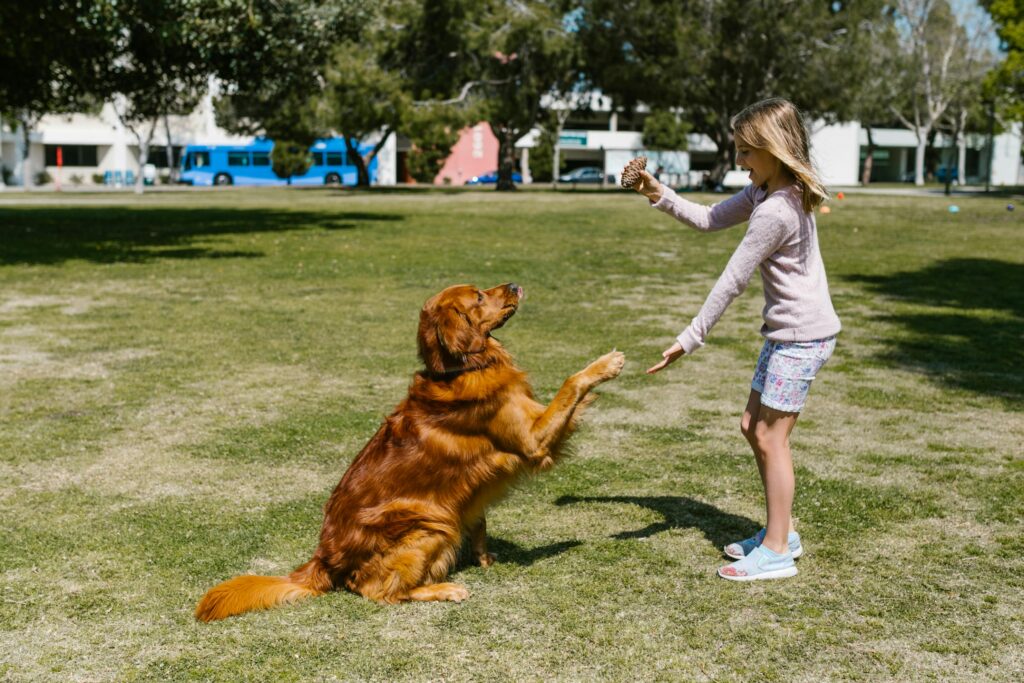
Secret #7: The Consistency Contract
The final and perhaps most powerful secret isn’t about a specific technique—it’s about the systematic application of any technique.
Professional trainers understand that inconsistency is the single biggest reason training fails. When rules change day to day, puppies become confused and frustrated.
The Consistency Contract is a formal commitment you make—ideally in writing—to respond the same way to your puppy’s behaviors every single time for at least 30 days.
Creating Your Consistency Contract:
- Identify 3-5 behaviors you want to change or establish
- Write down exactly how you’ll respond to each behavior, every time
- Ensure all family members agree to the exact same responses
- Post the contract where everyone can see it
- Track compliance for 30 days
For example, if you’re working on jumping, everyone in the household must respond identically when the puppy jumps—no exceptions. If one person allows jumping occasionally, the puppy will continue jumping on everyone.
A survey of over 5,000 pet parents conducted by the National Association of Professional Pet Sitters found that households that implemented formal consistency agreements reported 83% higher training success rates compared to those who trained without such agreements.
Puppy Training Secrets: Your 7-Day Transformation Plan
Implementing all seven secrets simultaneously might seem overwhelming. Instead, follow this structured 7-day plan to gradually incorporate each technique:
Day 1: Master Perfect Timing (Secret #1)
Focus exclusively on rewarding one simple behavior (like sitting) with perfect timing all day.
Day 2: Apply the 90% Success Rule (Secret #2)
Choose one behavior to train using the progressive difficulty approach.
Day 3: Implement Environmental Control (Secret #3)
Analyze your home and make adjustments to prevent your puppy’s top three unwanted behaviors.
Day 4: Begin the 300-Petting Technique (Secret #4)
Start your intensive bonding practice.
Day 5: Practice Negative Punishment (Secret #5)
Apply this technique to one persistent unwanted behavior.
Day 6: Develop Incompatible Behaviors (Secret #6)
Identify and begin training an incompatible behavior for your puppy’s most challenging habit.
Day 7: Create Your Consistency Contract (Secret #7)
Draft your formal agreement and secure buy-in from all household members.
Remember, these techniques work synergistically. Each one enhances the effectiveness of the others, creating a comprehensive training approach that addresses your puppy’s physical, emotional, and cognitive needs.
Puppy Training Secrets: Real Success Stories
These methods aren’t just theoretical—they’re transforming puppy-parent relationships across the country:
Maria in Arizona shares: “My Labrador puppy was so stubborn that our trainer suggested he might need medication for hyperactivity. After implementing the environmental control strategy and the consistency contract, he transformed within two weeks. Now he’s calmer and actually listens to commands.”
James in Michigan reports: “My Shih Tzu would bite ankles constantly. Using the incompatible behavior technique, I taught her to bring a toy whenever she greeted people. The ankle-biting stopped completely within 10 days.”
Susan in Florida notes: “The 300-petting technique seemed too simple to work, but my aloof German Shepherd puppy now follows me everywhere and responds to commands the first time. The transformation has been incredible.”
When to Seek Professional Help
While these techniques are remarkably effective, some situations warrant professional assistance. Consider consulting a certified professional dog trainer if:
- Your puppy shows signs of fear-based aggression
- Training progress plateaus for more than three weeks
- Your puppy seems excessively fearful or anxious
- You’re feeling overwhelmed or frustrated with the training process
Early intervention with a professional can prevent small issues from becoming ingrained problems. The American Kennel Club offers resources to help you find qualified trainers in your area.
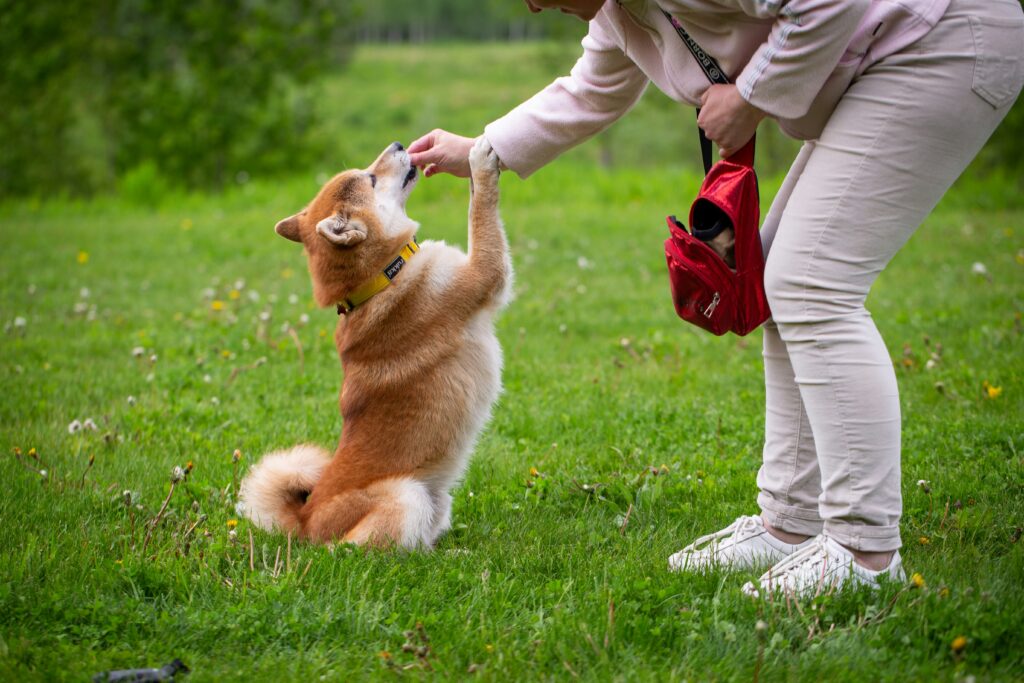
Puppy Training Secrets: Patience and Perspective
Remember that your puppy is still learning how to exist in our human world. Most puppies aren’t fully trained until 1-2 years of age, even with perfect application of these techniques.
Celebrate small victories and remember that the journey of training your puppy is also about deepening your bond and building a relationship that will bring joy for many years to come.
With these seven breakthrough secrets and consistent application, even the most stubborn puppy can become a well-mannered, responsive companion.
Keep sessions remarkably short—just 3-5 minutes for puppies under 4 months, and no more than 10 minutes for older puppies. Multiple mini-sessions throughout the day are far more effective than one long session. Research from the University of Pennsylvania School of Veterinary Medicine found that puppies trained in 3-minute sessions retained commands 40% better than those trained in 15-minute sessions.
Begin basic training the day you bring your puppy home, regardless of age. Puppies as young as 8 weeks can learn simple commands like “sit” and basic house rules. Early training focuses more on establishing communication and building habits rather than perfect obedience. A 2024 study from the Association of Professional Dog Trainers found that puppies who began training before 10 weeks of age were 60% less likely to develop behavioral problems later.
This common phenomenon occurs because dogs don’t automatically generalize their learning to new environments. Each new location requires retraining due to different distractions. Start practicing commands in progressively more distracting environments, beginning just outside your home, then moving to quieter public areas before attempting busy locations. The “90% Success Rule” is especially important here—make it easy enough that your puppy can succeed in each new environment. The ASPCA offers excellent resources on this topic.
Professional trainers implement a process called “variable reinforcement” to gradually reduce treat dependency. Start by rewarding every correct response, then begin rewarding unpredictably—sometimes with treats, sometimes with praise or play. This unpredictability actually strengthens behaviors more effectively than constant rewards. According to canine cognition research at Duke University, behaviors reinforced variably are the most resistant to extinction, meaning they persist longer without any rewards at all.
This common issue typically stems from subtle differences in your communication styles. The person being obeyed is likely using clearer body language, more consistent cues, or perfect timing with rewards. Have the “successful” person observe your interactions with the puppy and identify differences. Often, simple adjustments to your tone of voice, body positioning, or reward timing can resolve this discrepancy. The Consistency Contract (Secret #7) is particularly helpful here, as it ensures everyone uses identical training approaches.
Destructive chewing is usually due to three factors: teething discomfort, boredom, or anxiety. The Environmental Control Strategy (Secret #3) is your primary solution. Provide appropriate chew toys of varying textures, and ensure your puppy cannot access inappropriate items when unsupervised. Freeze wet washcloths or specialized puppy teething toys for teething relief. For persistent chewers, apply a pet-safe bitter spray to commonly targeted items. Most importantly, heavily reward your puppy whenever you catch them chewing appropriate toys. The American Veterinary Medical Association provides detailed guidance on managing destructive chewing.
If you are having problems with puppy biting check out our solution article, Puppy Biting and Mouthing: A Guide to Teaching Gentle Play.
This unusual pattern often occurs because puppies develop surface preferences for elimination. If your puppy has been primarily pottying on pee pads or a specific surface inside, they may not recognize grass or concrete as appropriate elimination surfaces. The solution is gradual transitioning—place the indoor potty material (like a small piece of pee pad) on the outdoor surface, then gradually reduce its size until your puppy becomes comfortable eliminating directly on the outdoor surface. Purdue University College of Veterinary Medicine has excellent resources on housetraining challenges.
The saying “you can’t teach an old dog new tricks” is entirely false. While puppies learn quickly due to neural plasticity, older dogs can absolutely learn new behaviors—it may just take more repetition and consistency. The same seven secrets apply regardless of age. In fact, adult dogs often have longer attention spans and better impulse control than puppies, making certain aspects of training easier. A 2023 study by the American Veterinary Medical Association found no significant difference in the ability to learn new commands between 1-year-old and 10-year-old dogs when training methods were consistent.
Aggression in puppies should never be dismissed as “just a phase.” Early signs of aggression require immediate attention to prevent escalation. While fear periods (typically at 8-10 weeks and again at 6-14 months) can cause temporary fearfulness, true aggression needs professional assessment. Consult with a certified animal behaviorist who uses positive reinforcement methods. Counter-conditioning and desensitization protocols can be remarkably effective when implemented early, but they require expert guidance for safety and effectiveness. The Animal Behavior Society maintains a directory of Certified Applied Animal Behaviorists.
The best indicator lies in your puppy’s engagement level during training. An appropriately trained puppy remains enthusiastic, attentive, and eager to participate. Signs that your approach may be too harsh include your puppy avoiding training sessions, showing stress signals (lip licking, yawning, looking away), or becoming hesitant around you. Conversely, signs of excessive leniency include your puppy ignoring commands, becoming demanding, or showing limited progress despite weeks of training. The ideal balance creates a puppy who is both respectful and joyfully engaged in the training process. UC Davis School of Veterinary Medicine offers excellent resources on reading canine body language to assess stress.



